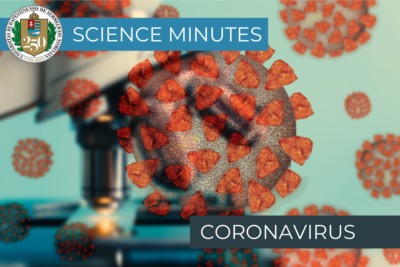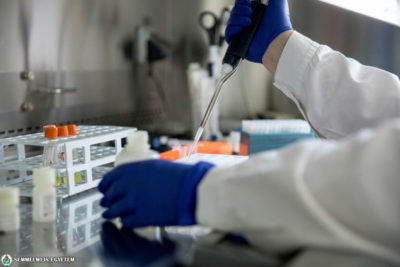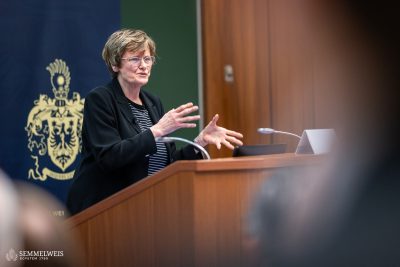A publication on the coronavirus by researchers at Semmelweis University authored in collaboration with researchers from the National Public Health Center and the National Biosafety Laboratory has been published on the cover of the prestigious scientific journal Nano Letters. The working group led by Dr. Miklós Kellermayer, Dean of the Faculty of Medicine, Director of the Department of Biophysics and Radiation Biology, was the first to examine the structure of an active, infectious coronavirus. As an extention of the study, the properties of the British virus variant are analyzed.
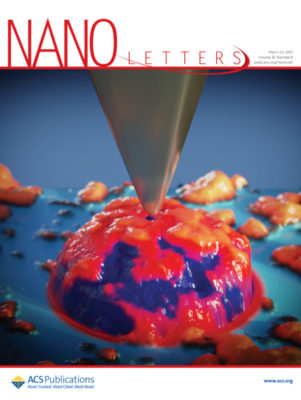 Last summer, a working group led by Dr. Miklós Kellermayer began examining the structure and the nanomechanical properties of the novel coronavirus using atomic force microscopy (AFM). The study is unique in the sense that it was the first time that the active and infectious virus was studied instead of a fixed or frozen virus particle. Based on the information of the Dean of the Faculty of Medicine, no similar study has been performed since then. The results suggest that the virus is self-healing and may be one of the most resilient biological organisms known to mankind, and that the corona-shaped layer of spikes is extremely dynamic. Their study showed that the coronavirus is easily compressed, but it restores its shape like a rubber ball, and its structure is not damaged by physical impact. The research was introduced in detail in this article.
Last summer, a working group led by Dr. Miklós Kellermayer began examining the structure and the nanomechanical properties of the novel coronavirus using atomic force microscopy (AFM). The study is unique in the sense that it was the first time that the active and infectious virus was studied instead of a fixed or frozen virus particle. Based on the information of the Dean of the Faculty of Medicine, no similar study has been performed since then. The results suggest that the virus is self-healing and may be one of the most resilient biological organisms known to mankind, and that the corona-shaped layer of spikes is extremely dynamic. Their study showed that the coronavirus is easily compressed, but it restores its shape like a rubber ball, and its structure is not damaged by physical impact. The research was introduced in detail in this article.
Last year the results were published on bioRxiv, a platform of scientific database, and after the usual evaluation process, a prestigious scientific journal also accepted the publication.
“Nano Letters is one of the top journals in nanosciences, whose impact factor, indicating the citation average number of the citations of articles, is above 11, which is very high”, pointed out Dr. Miklós Kellermayer.
The importance of their research is further emphasized by the fact that it has made the front page of the latest issue of the journal, along with the four other publications.
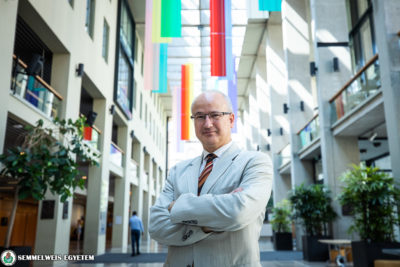 The cover image of the study shows how the approximately 80-nanometer-wide SARS-CoV-2 particle is indented by an even smaller AFM tip. The illustration was created by a Spanish graphic company who have an excellent portfolio of virology related images. A short animation of the research was also made, which was first presented at the opening presentation of the Semmelweis Symposium last November.
The cover image of the study shows how the approximately 80-nanometer-wide SARS-CoV-2 particle is indented by an even smaller AFM tip. The illustration was created by a Spanish graphic company who have an excellent portfolio of virology related images. A short animation of the research was also made, which was first presented at the opening presentation of the Semmelweis Symposium last November.
Dr. Miklós Kellermayer said that studies on the coronavirus are continuing, and the British virus variant is currently being analyzed on fixed samples for the time being.
“Our initial results suggest that this mutant is smaller than the wild type, which is quite surprising. The exact reasons are not yet known”, he said.
However, the smaller size of the spherical particles suggests that the surface area of the British virus variant has increased in terms of mass or volume. This means that although the surface area of individual virions is smaller, their total surface area is larger. This may be related to its property of being more contagious than the original pathogen.
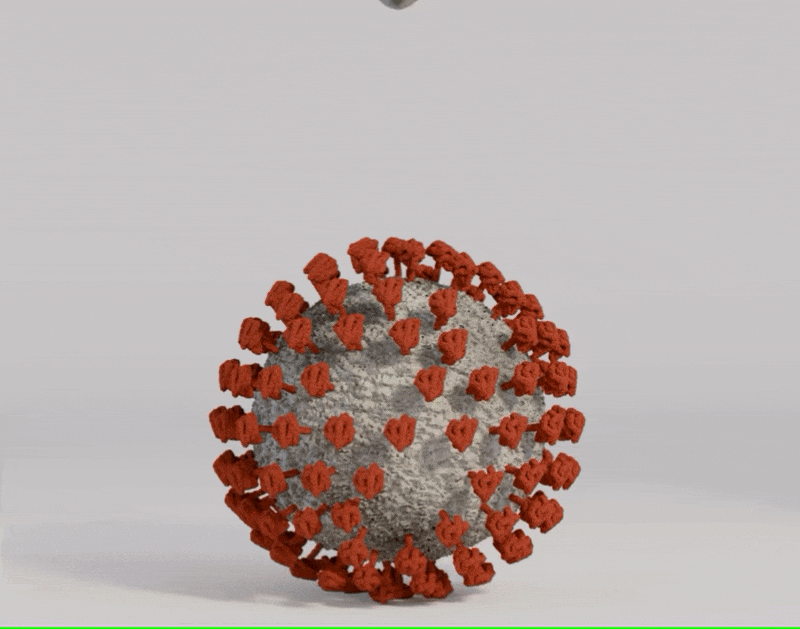
The publication published in Nano Letters is available here.
Ádám Szabó
Photo: Attila Kovács – Semmelweis University (photo taken earlier)
Illustration: Nano Letters
Translation: Katalin Illés-Romhányi
